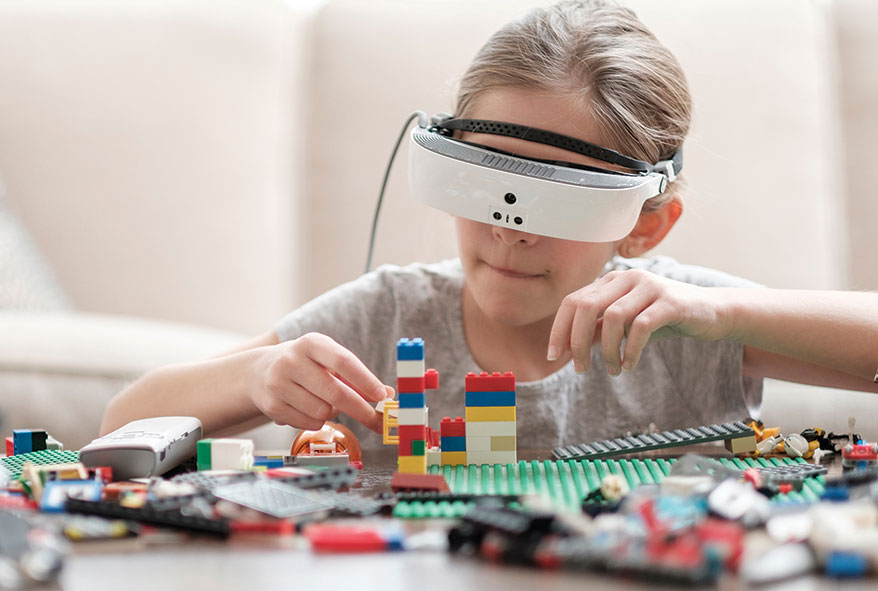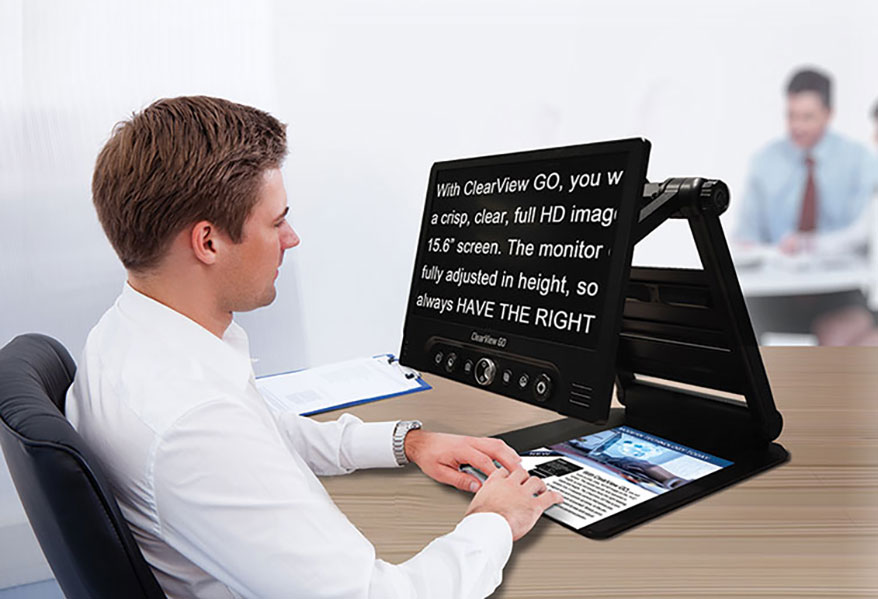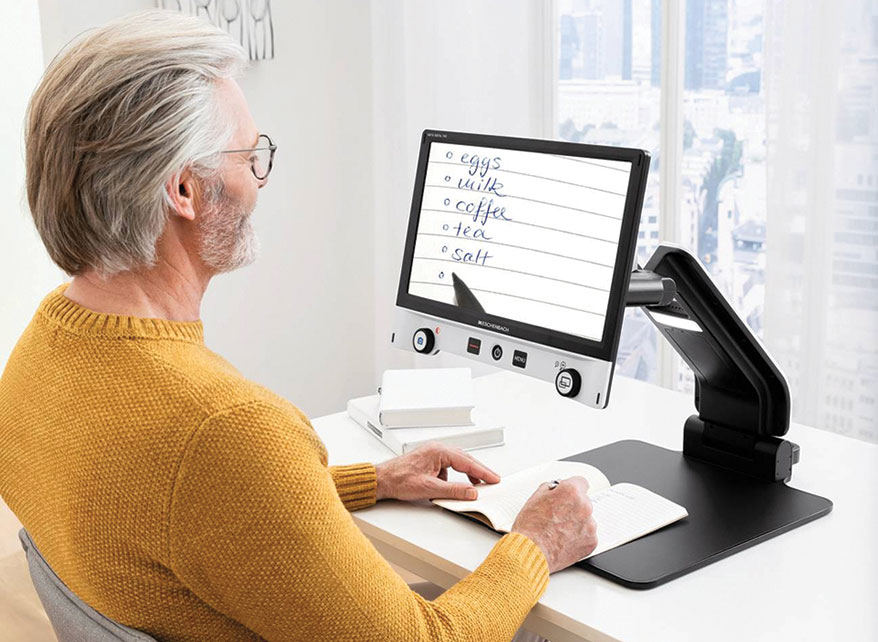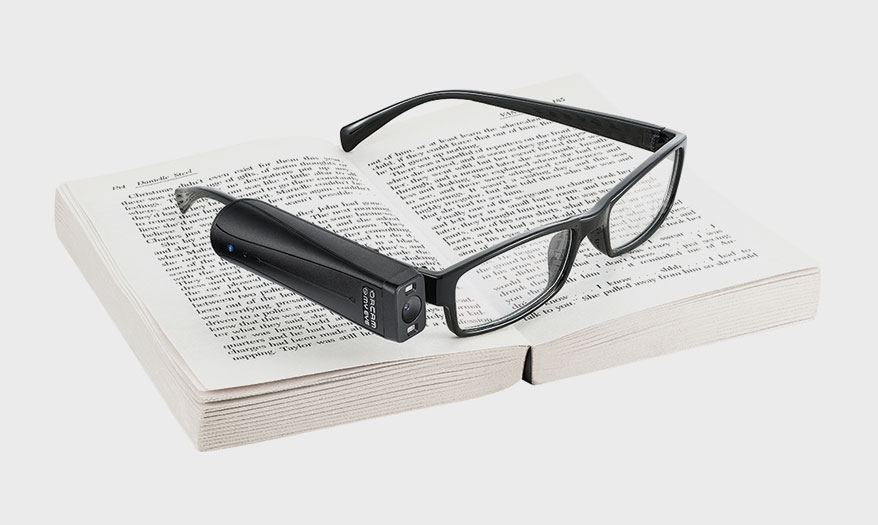VIDEO PROJECTION, MAGNIFICATION and artificial intelligence are some of the features that differentiate devices in the low vision space. OrCam has introduced voice commands to its augmented reality (AR) devices, along with Bluetooth connectivity and barcode learning. Startup Ocutrx will launch an AR headset with cameras, sensors, location mapping, character recognition and audible alerts. Low vision specialists caring for patients who need additional help seeing can dispense a variety of aids that allow them to read and do many of the tasks they did before their underlying eye disease developed.

eSight
eSight 3 uses a camera to put video directly in front of a patient’s eyes.
(855) 837-4448, eSightEyewear.com

IrisVision
IrisVision headset combines hardware and software to help low vision patients see.
(855) 449-4536, irisvision.com
Advertisement

Vispero
ClearView GO (branded Optelec) has a foldable design and rotating camera for near, intermediate and distance viewing.
(727) 803-8000, vispero.com

Ocutech
VES Falcon autofocus bioptic telescope.
(800) 326-6460, ocutech.com

Ocutrx Vision Technologies
Oculenz AR Wear headset, launching mid-year 2020.
(949) 216-5900, oculenz.com
Advertisement

Eschenbach Optik of America
Vario Digital FHD foldable desktop video magnifier.
(800) 487-5389, eschenbach.com

OrCam
OrCam MyEye 2 reads text, recognizes faces and identifies products.
(800) 713-3741, orcam.com
Smart Ways To Sell Artificial Vision Aids
Dr. Andrew Lindell, Stoughton Eye Care & Eyewear, Stoughton, WI

During a low vision exam, I figure out a patient’s acuity, where their blind spots are, their eye dominance, color vision and contrast to figure out which device will be most successful. All new technologies coming out provide great value to patients. Microsoft has developed a free talking camera app called Seeing AI which includes great features. Eschenbach’s video magnifiers work well and are simple to use, color coded, large and tactile. I like Ocutech’s VES Falcon autofocus which is bioptic and doesn’t interfere with field of view or mobility. For low vision aids in pediatrics, children love anything iPad-based. Some devices like NuEyes and Patriot Viewpoint are wearable video magnifiers great for home use.
Dr. Walter Wittich, University of Montreal’s School of Optometry, Montreal, Quebec

We’ve spent a lot of time researching head mounted devices; they’re getting smaller, lighter and cheaper. There’s no longer a stigma attached, and the advantage for the visually impaired is they’re hands-free. For example, they are perfect for playing the piano. A single camera is mounted onto the glasses which in real-time projects a modified picture to two screens on the inside where the lenses would be. This picture can be pre-programmed to change color or enhance an image. Each device requires an OD to carry out a refraction. Prices start at $500 and there’s really no top limit since cost is connected to what the device can do. A competitive field and moving fast.